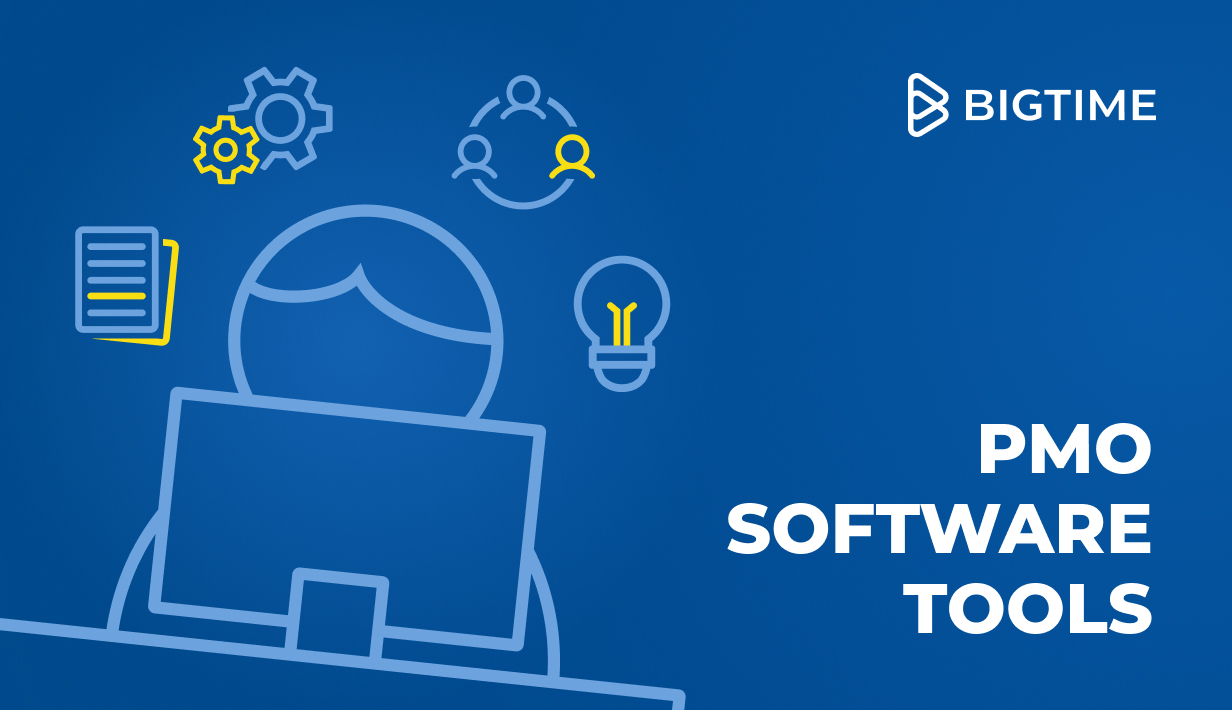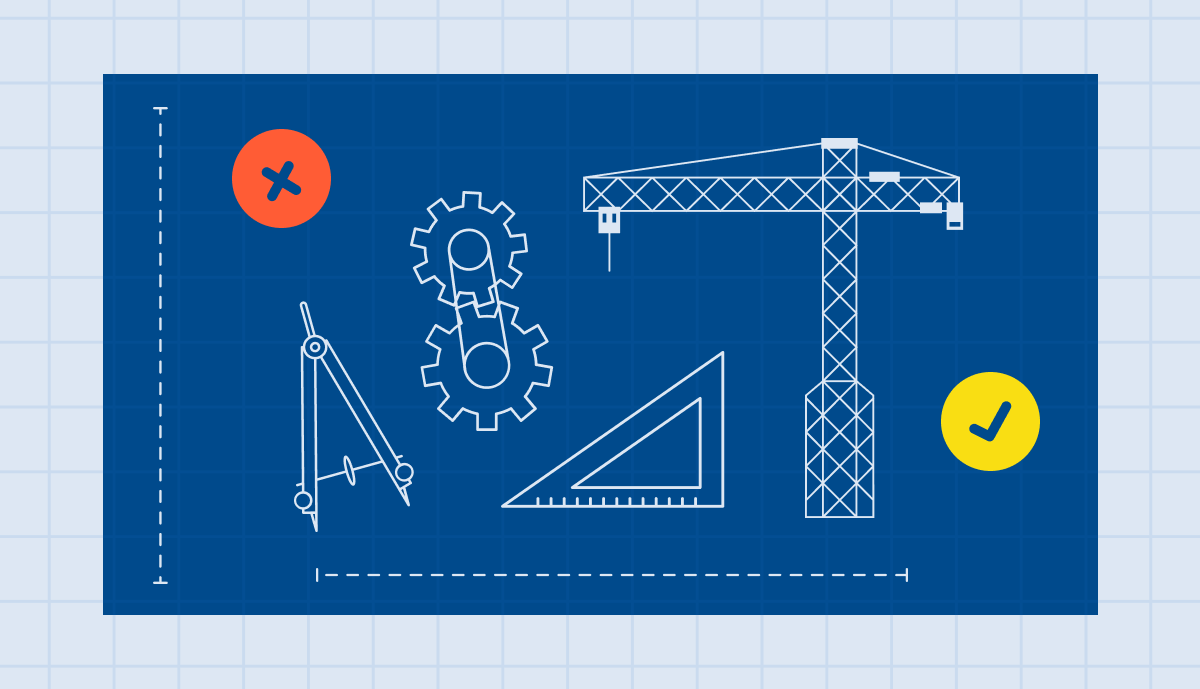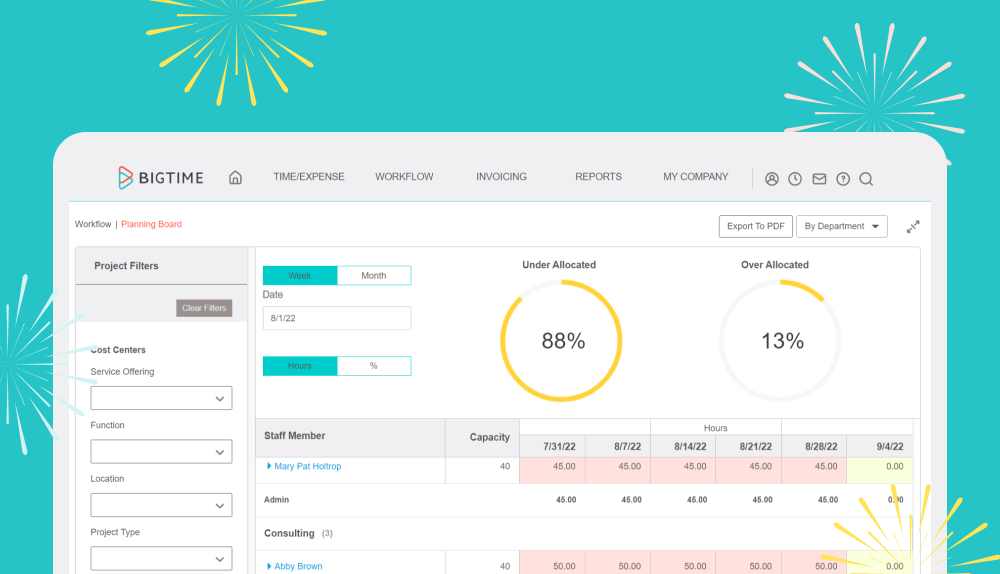In today’s hyper-competitive, results-driven business environment, a Project Management Office (PMO) backed by the right software tools is no longer a luxury; it’s a strategic necessity. From aligning projects with corporate goals to maximizing resource efficiency and ROI, PMO software tool enables organizations to turn strategic vision into measurable outcomes.
Let’s explore what a PMO is, its different types and responsibilities, and how modern PMO tools – like BigTime – bring project excellence within reach.
What is a Project Management Office (PMO)?
A PMO is a centralized unit within an organization that defines, maintains, and ensures project management standards and governance. It acts as the backbone of project execution, providing oversight, resources, methodology, and best practices to drive project and portfolio success.
More than just a support function, a well-structured PMO aligns projects with strategic objectives, fosters cross-functional coordination, and enables data-driven decisions.
Types of PMOs
Not all PMOs are established for the same reasons. With varying stategic needs, organizational goals and maturity come different types of Project Management Offices, and they all serve different purposes, from supporting project teams to managing project lifecycle.
The most popular types of PMOs include:
Supportive PMO
Instead of focusing on project management itself, supportive Project Management Offices act as a catalyst for team collaboration and process optimization. This type of PMO offers theoretical guidelines, such as templates, training and documentations, instead of ready-to-go project timelines or resource management plans. Consequently, such PMOs serve more of educational purposes, aiming to improve processes rather than to replace them with predefined solutions.
Controlling PMO
If your business already have established and polished its key processes, such as project planning, resource management or project tracking, a controlling Project Management Office might help your organization enforce those standards. This type of PMO ensures compliance with well-known standards and regularly monitors project performance from high-level perspective to ensure that optimized processes lead to the expected results.
Directive PMO
Aiming for a more hands-on approach? In that case, choosing a directive project management office might be a good choice for you. This type of PMO directly manages and executues projects from start to finish; from project planning to project tracking, even in the most complex projects. For that reason, such offices are often found in larger, project-centric organization in professional services industry, supporting software development projects, as well as key processes in accounting and consulting.
What Are The Responsibilities of a Project Management Office?
A Project Management Office (PMO) plays a critical role in ensuring that projects are executed consistently, efficiently, and strategically across an organization. Acting as the central hub for project governance and execution standards, the PMO is responsible for overseeing the full project lifecycle—from initiation and planning to project delivery, monitoring, and closure.
While the key responsibilities of a project management might vary depending on its type and individual organizational processes, there are a few key tasks that are performed by every PMO. Those include:
- Defining and standardizing processes across the entire organization, often by using various collaboration tools and project management software solutions. This standardization ensures that project teams follow consistent practices, which enhances predictability, and repeatable success.
- Ensuring project alignment with business strategy. PMOs serve as the strategic bridge between upper management and project teams. They evaluate proposed projects to ensure alignment with the organization’s goals, prioritizing initiatives that deliver the greatest value.
- Managing project risks and dependencies. The office is responsible for identifying and mitigating risks across projects. It also manages interdependencies in the project portfolio to prevent conflicts, delays, or resource bottlenecks that can jeopardize successful delivery.
- Resource allocation and optimization. Project managers in the office track the availability, workload, and skills of team members across projects to ensure optimal resource utilization rates. It plays a vital role in capacity planning and avoiding both resource overload and underuse.
- Monitoring progress and reporting performance metrics. To maintain control and visibility, PMOs establish key performance indicators (KPIs) and reporting mechanisms that track project progress, costs, timelines, and quality. Then, they regularly analyze project data from different sources, drawing conclusions and mitigating unexpected risks.
- Driving continuous improvement across projects. Beyond governance, PMOs champion a culture of continuous improvement. They gather insights from project outcomes, conduct post-mortems, and refine processes based on drawn conclusions.
What Are The Roles in PMO?
The structure and composition of a Project Management Office (PMO) can vary based on the size, maturity, and strategic importance of the PMO within the organization. While some PMOs operate with a lean team, others—especially in large enterprises—feature a robust set of specialized roles to ensure operational excellence, strategic alignment, and cross-functional coordination.
The most common roles in the project management offices include:
- PMO Director / Lead – Oversees the PMO strategy and operations, aligning goals with executive leadership and establishing standards for project management practices.
- Project Managers – They take ownership of individual projects, ensuring they are delivered on time, within scope, and on budget. To do so, they take care of project tasks, project planning, resource management, and quality control throughout the project lifecycle.
- Portfolio Managers – They oversee groups of related projects and programs, ensuring alignment with strategic goals and proper prioritization.
- Business Analysts – Support the front-end of project planning by working closely with stakeholders to define requirements and shape the project scope.
- Resource Managers – Tasked with managing the organization’s human capital across projects. They ensure that the right people—with the right skills—are assigned to the right tasks.
- PMO Analysts / Coordinators – Often seen as the operational backbone of the PMO, Analysts and Coordinators handle the administrative and reporting functions that keep projects running smoothly.
What Are the Core PMO Software Tools?
Investing in PMO software tools is not just about managing projects—it’s about empowering teams, aligning with strategic goals, and delivering predictable, high-impact outcomes. With the right toolset in place, your PMO can go from a support function to a strategic driver of business performance.
But what does “the right PMO software” mean? Let’s break down the core features that it needs to have to become a single source of truth for any project management office.
Project management tools
Project management tools are the foundation of any PMO software, providing the framework for planning, organizing, and executing projects efficiently. These tools offer visibility into project timelines through Gantt charts and task boards, allow for tracking progress with milestones and deadlines, and enable teams to manage task dependencies and critical paths. With these features, PMOs can ensure consistency, accountability, and smooth execution from initiation to delivery.
Project portfolio management
Project portfolio management adds a strategic layer by giving the PMO the ability to evaluate and prioritize projects across the organization. Through high-level visualizations and scenario planning, PMOs can align projects with business goals, assess risk and ROI, and manage resource capacity across the portfolio. This strategic view allows leadership to invest in initiatives that deliver the greatest business value.
Resource management
Resource management plays a crucial role in maximizing productivity in task management and avoiding bottlenecks. PMO software should offer real-time visibility into team capacity, allowing managers to allocate work based on availability and skillsets. With proper resource planning, organizations can balance workloads, prevent schedule conflicts, and ensure that the most critical projects have the talent they need to succeed.
Project progress monitoring
Project progress monitoring is essential for keeping initiatives on track and identifying problems before they escalate. PMOs need tools that enable real-time tracking of health indicators, timelines, costs, and quality benchmarks. Built-in issue and risk management features, along with automated status updates and alerts, empower project leads to take corrective action quickly and maintain momentum.
Financial management
Financial management capabilities help organizations maintain fiscal discipline across all project work. Effective PMO software should support budgeting, cost tracking, and revenue forecasting. When integrated with time tracking and accounting tools, it allows for real-time monitoring of expenses, enabling PMOs to stay within budget and assess the pofinancial performance of individual projects and the overall portfolio.
Reporting and analytics
Reporting and analytics are the final piece of the puzzle, transforming raw data into meaningful insights. Comprehensive dashboards and customizable reports allow stakeholders at all levels to monitor performance, identify trends, and make data-driven decisions. With strong analytics capabilities, the PMO can ensure transparency, drive accountability, and improve forecasting accuracy.
Integrations
Comprehensive project management tool will not separate your project management process from the rest of your digital environment. Instead, they will allow you to create a single source of truth for all the processes with seamless integrations.
The best project portfolio management software will do more than just connect with Jira time tracking. Quality project management tools—such as BigTime—can also incorporate invoicing, time tracking, HR tools, and more, to facilitate the processes you already know and like.
BigTime: One PMO Software Tool That Fits All
Selecting project management software that grows and scales with your business it’s not a piece of cake – unless you know exactly where to find the right platforms. In your case, you don’t have to look far: BigTime has everything you need to manage multiple projects without a single error.
What Makes BigTime One of the Best Project Management Tools?
From invoicing to resource allocation, from task management to sprint planning, from monitoring project status to creating invoides, BigTime has everything any professional services will ever need to successfully manage their project portfolio.
Our project management software can support all the key processes in your organization. Thanks to a wide range of advance features ranging from resource allocation to project costs management, BigTime can help you:
- Forecast resource utilization and create preciste project plans for multiple projects based on actual data updated every time a change is made.
- Test out different project scenarios and choose the best path for project and task management – every time.
- Monitor project budgets without missing a single penny; all the overheads will be included in your calculations, regardless of the billing type and periods.
- Create project reports in seconds with templates, custom reports and advanced features for AI generated resources.
Choose BigTime’s Advanced Project Management Software and Boost Profitability
Want to experience how BigTime’s key features can optimize your processes? Now you can see it live! Book a demo to experience the power of BigTime’s project management tools work in practice and see how your project management can benefit from better decisions.




